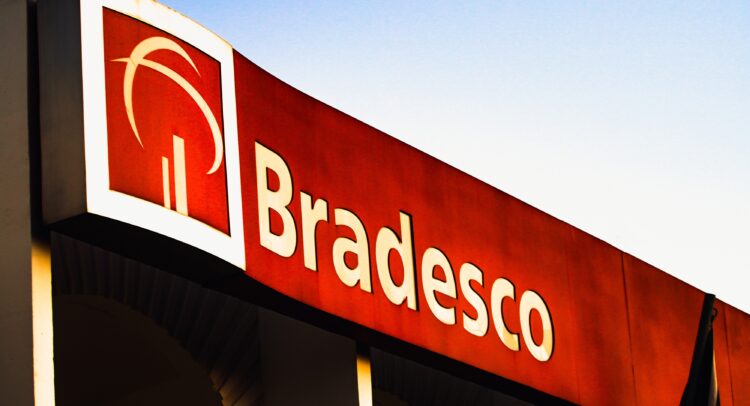Bradesco (NYSE:BBD), a major player in Latin American banking, has lagged behind its peers due to a challenging macroeconomic environment and less efficient asset management. Despite efforts at a robust turnaround, I currently take a neutral stance on BBD.
While BBD trades at a discount compared to its local competitors, the investment thesis for Bradesco hinges more on its turnaround strategy than on solid fundamentals. I believe when it comes to investing in banking stocks, this shouldn’t be the ideal approach.
In this article, I’ll delve deeper into why Bradesco finds itself in this predicament.
Bradesco’s Position in Brazil’s Banking Landscape
Bradesco stands among Brazil’s private banking giants, competing head-to-head with Itaú Unibanco (NYSE:ITUB) and Santander Brasil (NYSE:BSBR) while also contending with state-owned banks like Banco do Brasil (OTC:BDORY) and Caixa Econômica Federal.
Its business model spans banking and insurance, targeting Brazil’s middle-class and low-income demographics. However, this diverse credit portfolio has posed challenges, causing Bradesco to underperform compared to some of its local rivals. The bank has faced stiff competition from digital banks like Nu Holdings (NYSE:NU) and Inter & Co (NASDAQ:INTR), hindering its growth in recent years.
Adding to its challenges, Brazil’s credit environment has been declining, though a modest recovery is anticipated in 2024. Bradesco has struggled with rising default rates, with its 90-day non-performing loans (NPL 90+) spiking from 2.6% in March 2021 to a peak of 7.2% by September last year, though it has since eased to 6.4% as of March 2024.

Several factors contributed to this surge. First, Brazil’s inflation soared due to the COVID-19 pandemic, hitting 12% early in 2022. Second, credit growth slowed throughout 2023, spurred by double-digit interest rates aimed at curbing inflation. Alongside these macroeconomic pressures affecting the entire banking sector, Bradesco faced a more specific issue.
Due to its substantial exposure to retail credit, Bradesco set aside an extra provision of R$4.9 billion (over a billion USD) in February last year to cover its exposure to an accounting scandal involving the retailer Americanas, which severely impacted the bank’s bottom line.

Consequently, Bradesco saw a sharp decline in its profitability from 2022 to 2023. The bank’s return on average equity (ROAE) plummeted from 18.7% in Q1 2021 to 10.2% in Q1 2024, which explains why its stock has depreciated by approximately 64% over the past five years. For comparison, Itaú Unibanco and Banco do Brasil, the top performers in the industry, reported an ROE of over 21% in the latest quarter.
Comparing Bradesco’s stock performance with its main domestic peers reveals it has performed the worst over this period.

Bradesco’s Attempt to Turn Things Around
To turn around the adverse situation of the past five years, Bradesco has embarked on a comprehensive operational restructuring.
In November 2023, Bradesco announced Marcelo Noronha as its new CEO. By February 2024, Bradesco unveiled a strategic restructuring plan set to be implemented through 2028. This plan includes significant changes, particularly at the C-Level, aimed at optimizing cross-selling processes and re-segmenting the bank’s service areas.
The primary goal is to enhance efficiency, targeting a 40% efficiency ratio (where lower is better). In Q1 2024, the bank reported a 50% ratio. Achieving this target will require meticulous management of operating expenses, and while this will take time, some progress is already evident this year.
First, there was an improvement in provisions. In Q1 2024, Bradesco reported an almost 18% drop in provisions compared to Q1 last year, totaling R$7.8 billion. Operating expenses fell 10.5% quarter-over-quarter to $13.4 billion, though they were up 4% year-over-year.
Bradesco posted a net profit of R$4.2 billion, a significant 46% increase quarter-over-quarter, though a slight 1.6% drop year-over-year. Its annual return on average equity (ROAE) of 10.2% marked an improvement of 3.3 percentage points quarterly but was partially offset by the 0.4 percentage points drop year-over-year, still trailing the bank’s historical levels.
Although the turnaround is progressing slowly, these are small victories for Bradesco’s shareholders to celebrate.
The current scenario also highlights the rather derisked valuation multiples at which Bradesco has been trading. The bank trades at a P/B ratio of 0.7x, indicating more about market concerns over the bank’s future profitability than necessarily viewing BBD as undervalued.
Is BBD Stock a Buy, According to Analysts?
In the past three months, only Bank of America (NYSE:BAC) analyst Mario Pierry has weighed in on Bradesco stock with a Hold recommendation. Despite his neutral stance, Pierry has set a price target of $3.20 per share on BBD stock, suggesting substantial upside potential of 38.8%.

Conclusion
Bradesco has been the laggard among Brazilian banks, taking the hardest hits due to its focus on middle and low-income customers, making it more vulnerable to economic headwinds. The weighty provisioning for the Americanas scandal further dragged down its performance, squeezing its efficiency.
Now, management is racing against the clock to turn this sleeping prominent Brazilian bank around. While the conditions might be improving for a recovery, betting on a downturn is a risky play, and the bullish case doesn’t quite shine, either.
















